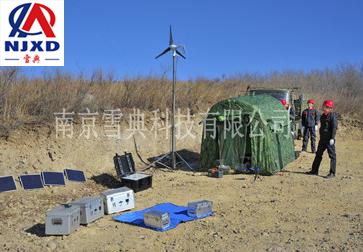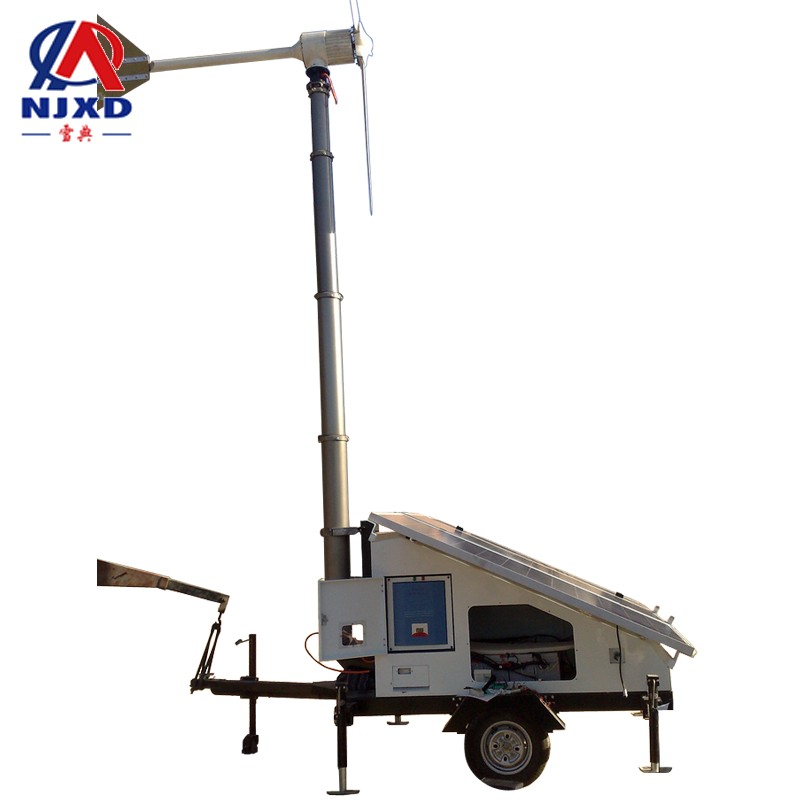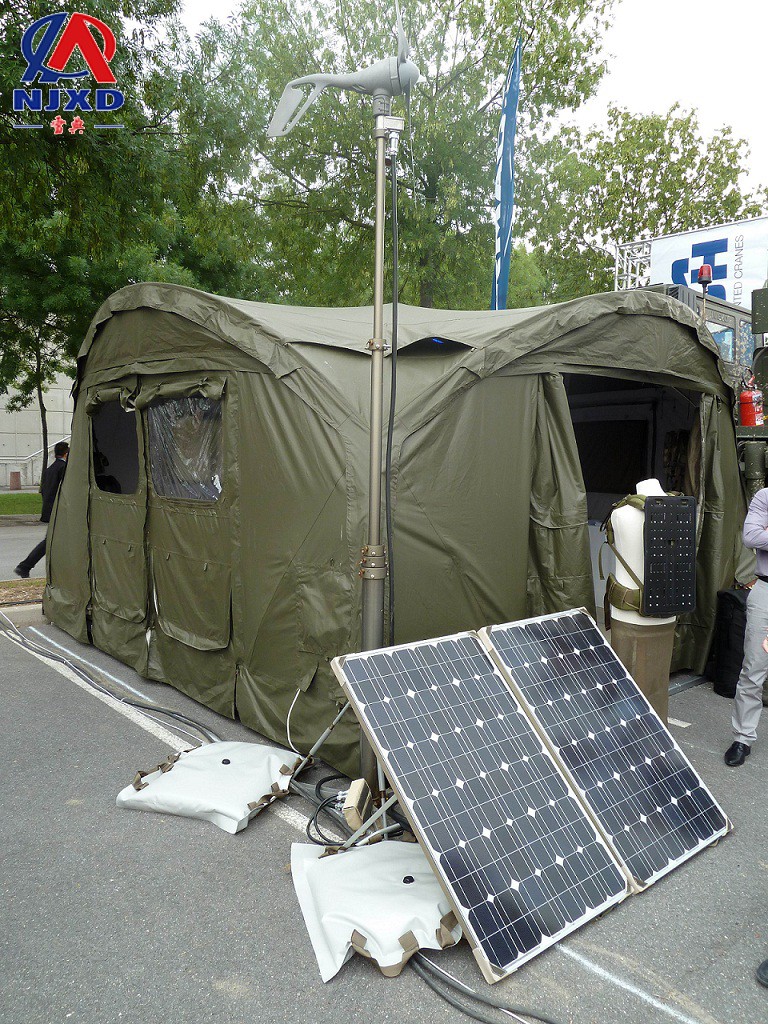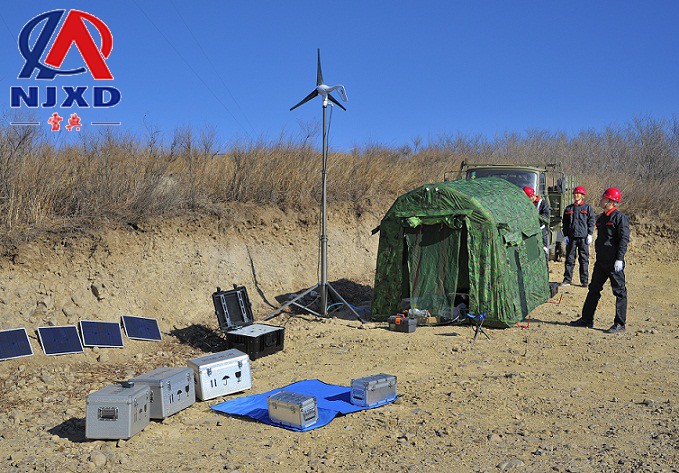NEWS
Wind power generation lift rod utilization of wind energy
Time:2021-08-27 View:

Kinetic energy generated by wind energy (wind energy) air flow. A form of conversion of solar energy. Due to the uneven heating of all parts of the Earth's surface caused by solar radiation, the pressure distribution in the atmosphere is unbalanced. Under the action of horizontal barometric gradient, the air moves along the horizontal direction to form wind. The total reserves of wind energy resources are very huge, and the energy that can be developed by technology in a year is about 5.3x 10 ^ 13 kW hours. Wind energy is a renewable clean energy with large reserves and wide distribution, but its energy density is low (only 1/800 of water energy) and unstable. Under certain technical conditions, wind energy can be developed and utilized as an important energy source. Wind energy utilization is a comprehensive engineering technology, which converts wind kinetic energy into mechanical energy, electric energy and heat energy through wind turbines.
Wind energy resources are determined by wind energy density and annual cumulative hours of available wind energy. Wind energy density is the wind power that can be obtained per unit of Windward area, which is proportional to the cubic sum of wind speed and air density. It can be used in telescopic mast.
Utilization form
The use form of wind energy is mainly to convert the kinetic energy of atmospheric motion into other forms of energy. Wind is the horizontally moving air, which generates motion, mainly due to the different solar radiation intensity received by different latitudes on the Earth. In the equatorial and low latitudes, the solar altitude angle is large, the sunshine time is long, the solar radiation intensity is strong, the ground and the atmosphere accept more heat and the temperature is higher; In the high latitudes, the solar altitude angle is small, the sunshine time is short, the Heat received by the ground and the atmosphere is small, and the temperature is low. This temperature difference between high latitude and low latitude forms the barometric gradient between north and south of China, making the air move horizontally.

Monsoon
The theoretical upper wind should be blown along the horizontal barometric gradient direction, that is, blowing vertically and isopiestic line from high pressure to low pressure, but the Earth is rotating, making the air horizontal motion biased force, called Coriolis force, this force deflects the air flow in the northern hemisphere to the right and the southern hemisphere to the left, so the atmospheric motion of the Earth is not only affected by barometric gradient force, but also by Coriolis force. The real movement of the atmosphere is the resultant force of these two forces. In fact, the ground wind is not only dominated by these two forces, but also largely influenced by the ocean, effect of terrain, mountains and Straits, which can change the direction of airflow movement and increase the wind speed, however, hills and mountains friction ambassador wind speed decreases, while isolated peaks increase wind speed due to high altitude. Therefore, the temporal and spatial distribution of wind direction and wind speed is relatively complex. For example, the influence of sea-land difference on airflow movement, in winter, the mainland is colder than the ocean, the continental air pressure is higher than the ocean, and the wind blows from the mainland to the ocean; In summer, on the contrary, the mainland is hotter than the ocean, the wind blows inland from the ocean. This seasonal wind is called monsoon.
Sea and Land Wind
The so-called Sea-Land Wind is also daytime, the air flow on the continent is heated and expanded to the upper air to the ocean, cooling and sinking over the ocean, and the air flow on the ocean near the stratum blows to the continent, to compensate for the rising air flow of the mainland, low-level wind blowing from the ocean to the mainland is called sea wind. At night (winter), the situation is opposite. Low-level wind blowing from the mainland to the ocean is called land wind. In mountainous areas, due to heat, it blows from the valley to the plain or hillside during the day and from the plain or hillside to the bottom of the valley at night. The former is called Valley wind, while the latter is called mountain wind. This is because the hillside is heated fast during the day, and the temperature is higher than the air temperature at the same height above the valley. The warm air on the slope flows from the hillside to the top of the valley, while the air in the Valley supplements the lost air along the hillside, at this time, the wind blowing from the valley to the hillside is called Valley wind. At night, because the hillside is radiational cooling, its cooling speed is faster than that of the air at the same height. Cold air flows down the slope into the valley, which is called mountain wind.
When the solar radiation energy passes through the Earth's atmosphere, the atmosphere absorbs about 2*10 ^ 16W of energy, a small part of which is converted into the kinetic energy of the air. Because the tropical zone absorbs more solar radiation energy than the subtropical zone, it generates air flow and generates wind due to atmospheric pressure difference. As for some areas, for example, in high mountains and deep valleys, during the daytime, the air on the top of the mountain rises by sunshine, and the cold air in the deep valleys is replaced. Therefore, the wind blows from the deep valleys to the mountains; At night, the air on the mountain dissipates heat faster, so the wind blows from the mountain to the deep valley. Another example, for example, in coastal areas, sea breeze blows to land due to the temperature difference between land and sea during the day; Otherwise, it blows from land to sea at night.

Wind energy
1% to 3% of the solar energy absorbed by the Earth is converted into wind energy, and the total amount is equivalent to 50 to 100 times that of all plants on the Earth absorbed solar energy into chemical energy through photosynthesis. The energy of the wind will be found in the high altitude, where there is a strong wind with a speed of more than 160 kilometers per hour (100 miles 160 km/h 100 mph). The energy of these winds is finally released in various ways of heat energy due to the friction between the surface and the atmosphere.
The cause of the wind: the unheated surface is caused by the uneven illumination of the polar region and the equator by the sun; The speed of the surface temperature is faster than that of the sea; The effect of the stratosphere in the atmosphere as the ceiling accelerates the convection of the gas; seasons/changes; Coriolis effect; The reflection ratio of the moon forms the wind.
Wind energy can be extracted by windmills. When the wind blows the wind wheel, the wind drives the wind wheel to rotate around the axis, making the wind energy convert into mechanical energy. The amount of wind energy conversion is directly proportional to the air density, the area swept by the wind wheel and the square of the wind speed. The mass flow of air passes through the area swept by the wind wheel and changes with the wind speed and the density of air. For example, on cool days at 15°C (59°C), the air density at sea level is 1.22 kilograms per cubic meter (the air density will decrease when humidity increases). When the wind blows through the runner with a diameter of 100 meters at speed per second and 8 meters, the air of 1,000,000 kilograms can pass through the area swept by the runner per second.
The kinetic energy of the specified mass is proportional to the square of its rate. Because the mass flow increases linearly with the wind speed, the wind energy effectively used for the wind wheel will be proportional to the cube of the wind speed; In this example, the power of the wind wheel blown by stroke is about 2.5 million watts.
Because the wind turbine extracts energy, the air slows down, causing it to spread and contain it to some extent near the wind turbine. German physicist Albert Betz determined in 1919that the wind turbine might extract up to 59 percent of the energy that would otherwise flow through the cross section of the turbine. Regardless of turbine design, Betz limit application. The recent work is next to a theoretical limit of about 30% for propeller type turbines. The actual efficiency ranges from 1% to 20% for propeller type turbine, and is as high as 35% for three-dimensional perpendicular shaft turbine like Darrieus or Gorlov turbine.
There are wind changes, and the average value is that a measured location alone does not show that the wind turbine may cause a considerable amount of energy there. To estimate wind speed and soil in a special place, probability distribution is often suitable for observed data. Different locations will have different wind speeds. The most frequently used distribution model shaping wind speed geomancy is the two-parameter Weibull distribution because it can follow various distribution shapes, from Gauss to index. Rayleigh shaping, example, in which the plotted against the actual measured dataset on the right, it is a specific form of the effect of shape parameters totaling 2 Weibull and the actual distribution that closely reflects the hourly wind speed in many locations. Since many electric energy is generated by high wind speed, most of the available energy comes from instantaneous large wind speed. More than half of the available energy only accounts for 15% of the operation time. Therefore, it is impossible to adjust the power generation according to the electricity demand like a thermal power plant using fuel. Because the wind speed is not constant, the annual power generation of wind power generation is not the indicated power generation rate multiplied by all turn-around time (within one year). The actual generated value and the theoretical value (maximum value) are called capacity factors. The capacity factor of well-installed wind turbine can reach 35%. Compared with the turbine of the power plant that generally uses fuel, the wind turbine marked 1000kW can generate up to 350kW of electricity per year. Short-term output power is difficult to predict, but the change of annual power generation should be within a few percentages. When storage, such storage about pumping water and electricity with pump, or other forms of generation are used to "shape" the wind power (by ensuring the reliability of continuous delivery), commercial delivery represents a dynamic commercial performance with an increase of about 25% of the cost and submission.
Energy classification
The intensity of the wind is usually expressed by the wind level, which can be estimated by the situation that the ground or sea objects are blown by the wind. At present, the international wind force estimation is based on the standard of Beaufort wind. Pufu was a British Navy General, which was the first wind classification standard in 1805. First, it is only used at sea, then it is also used on land, and it has been revised repeatedly, which is the general purpose of today. The empirical relationship between actual wind speed and wind scale is as follows:
V= 0.836 * (B ^ (3/2))
B is the number of Beaufort wind, V is the wind speed (unit: meter/second)
Generally speaking, the starting wind speed of the wind turbine is 2.5 m/s, and when the face feels wind and the leaves shake, it has already started to operate and generate electricity. However, when the wind speed reaches 28~34 m/s, the fan will automatically detect the stop operation to reduce the damage to the receptor itself.

Advantages
Wind energy is a clean energy source. Wind energy facilities are improving day by day, and mass production reduces costs. In appropriate places, the cost of wind power generation is lower than that of other generators.
Wind energy facilities are mostly non-three-dimensional facilities, which can protect the land and ecology.
Wind power generation is a renewable energy source, which is very environmentally friendly and clean.
Wind power generation energy saving and environmental protection.
Disadvantages
The ecological problem of wind power generation is that it may interfere with birds, such as grouse in Kansas, USA, which has gradually disappeared after windmills appeared. The current solution is offshore power generation, which is expensive but efficient.
In some areas, the economy of wind power generation is insufficient: Wind power in many areas is intermittent, and worse situations are such as Taiwan and other places with high power demand in summer and daytime, it is time for less wind power; We must wait for the development of energy storage technologies such as compressed air.
Wind power generation requires a large amount of land to build a wind farm to produce more energy.
When conducting wind power generation, the wind turbine will make huge noise, so we need to find some open places to build.
The current wind power generation is not mature yet, and there is still considerable room for development.
Limitations and disadvantages
Wind energy utilization has some limitations and disadvantages
1) The wind speed is unstable and the generated energy is unstable;
2) wind energy utilization is severely limited by geographical location;
3) low conversion efficiency of wind energy;
4) wind energy is a new type of energy, and the corresponding equipment is not very mature.
5) wind power is suitable for power generation in places with wider terrain and fewer obstacles or places with higher terrain.

CATEGORY
NEWS
- Level division of wind speed wind resistance of lifting mast
- Wind power generation lift rod utilization of wind energy
- Great wind speed with lift rod wind resistance
- Difference between maximum wind speed and maximum wind speed lift rod wind resistance
- Basic interpretation of Reynolds number lifting bracket wind resistance